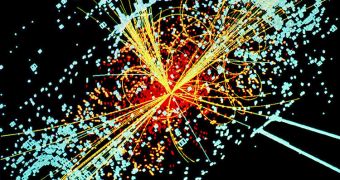Several months ago, the researchers at CERN announced that they had found, with significant evidence, a particle corresponding to the Higgs boson in their experiments with the Large Hadron Collider.
They didn't come out and say they discovered the Higgs boson since there was still a, very slim, chance that it was something else, something similar to the notorious particle, but somewhat different from what the standard model would suggest.
Still, plenty of people, based on the evidence, assumed that this was indeed the Higgs boson. In fact, some were a bit disappointed.
Finding the evidence for the particle that was theoreticized decades ago, and the only one in the standard model not discovered experimentally, is big news.
Not finding it, or finding something else entirely, would have been even more exciting, physicists love unanswered questions.
And it seems they may have a chance to get some pretty big new unanswered questions as the latest data from LHC, specifically from the Atlas instrument.
There are two big instruments looking for the Higgs boson in the LHC, Atlas and CMS, each designed by different themes and working on slightly different principles.
The latest numbers from Atlas point at two different Higgs particles, with a slight mass difference between them. The Higgs boson is created during the high speed and high energy impacts that occur in the LHC.
But the particle is so unstable that it disintegrates very shortly after its creation, so scientists aren't looking for the boson directly, rather they are looking for the particles that are created when the Higgs is destroyed.
Specifically, they are looking for decay paths, one in which two photos at a certain energy level are created, the other where four leptons are created.
Normally, these two decay paths should indicate the same source, i.e. a particle at a specific energy level. But that's not what Atlas is seeing. Instead, the two-photon channel points to a 126.6 GeV Higgs and the other at a 123.5 GeV, a significant difference.
The Atlas team has been trying to get to the bottom of this and check whether there's an error in the data. But they haven't been able to find anything and published the results as they are.
Still, as exciting as two particles may be, this is unlikely the case. There are several big arguments against this. For one, there are no theoretical models which could accommodate two distinct particles with such a small mass difference.
What's more, even if there were two particles, they should be created in equal amounts by both decay channels. Finally, CMS, the other instrument, doesn't show the same results, in fact, the Higgs boson decaying into four leptons is shown to have a higher mass than the one resulting in two photons.
The most likely explanation is a statistical error or an error in the experiment. What's more, the sample size so far is relatively small, Atlas will have to get data from several times more experimental runs to get better certainty in the numbers.

 14 DAY TRIAL //
14 DAY TRIAL //